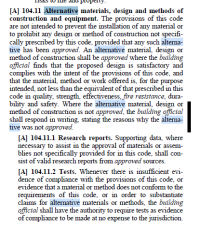Typically this type of building will have a Fire Protection Engineer (FPE) who will model smoke and fire. Alternate systems can be used.Here's a curve ball:
For people that missed out on my sharing that I was told that Section 903.2.11.1.2 had been used successfully in projects for power plants... I had asked for more information on that.
It was mentioned that some industrial projects (F occupancies) are Special Purpose Industrial Occupancies... such as power plants.
The provision being that they are exempt from the area or height limitations of Table 506.2.
In fact, some would say they can then totally ignore Table 506.2 in its entirety.
I'm not certain that it can be in fact ignored in total. Wouldn't it just mean that there is no height or area limitation but thresholds for needing fire sprinklers should still apply?
I am being told different. That Table 506.2 should be totally ignored if it is a Special Purpose Industrial Occupancy.
Then... this opens the door to Section 903.2.11.1.2 without any area limitations...
Not sure if this necessitates another thread but this is an interesting take that I'm not certain of.
As an example, the AHJ that I am with, has an incredibly large freezer that utilized a reduced oxygen environment in-place of sprinklers.

